Tag Archives:cookbooks
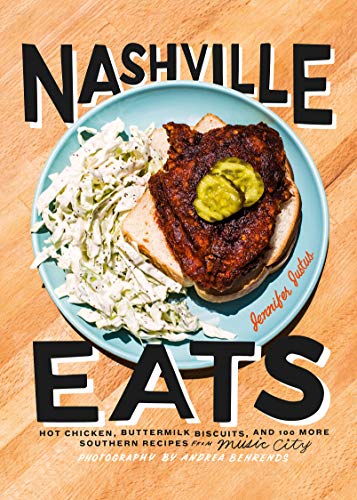
14
MayOde to Hot Chicken
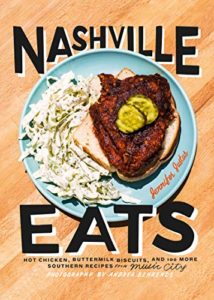 Warning: if you’re hungry or in danger of becoming hungry, proceed with caution.
Warning: if you’re hungry or in danger of becoming hungry, proceed with caution.
If you’ve visited a restaurant or ordered out in the past year, you may have noticed an item appearing on menus around the Northeast called “Nashville hot chicken.” What’s this? How is it different from regular spicy chicken, or buffalo sauce? Doesn’t this restaurant know we’re nowhere near Nashville?
Readers, friends, foodies: believe the hype. I had the great privilege of attending the Public Library Association Conference in Nashville, TN in February 2020 and have experienced firsthand the glory that is Nashville hot chicken… in fact I experienced it several times in several days. While I haven’t found a New England restaurant serving Nashville hot chicken that quite lives up to the real deal, I will keep hunting through local menus and sampling new versions because the real McCoy is just that good. If not life-changing, it was at least palette-changing.
My coworkers and I arrived in Nashville and did what any hungry traveler would do – ask the Lyft driver where they like to eat and what iconic dish they recommend we have to try before leaving Nashville. Time and again the answer we received was Nashville hot chicken, and everyone we asked had their own local spot they claimed made the best spicy bird in town. Realize that at this point in my life, I didn’t really care for fried chicken – at all. While I liked spicy foods, I could barely stand to eat a chicken wing. I shrugged, thinking I might as well try it as long as I’m here, and as long as everyone else was trying it…
We made our way to Hattie B’s Hot Chicken Restaurant, a Nashville-based chain that specializes in hot chicken and one of the major purveyors of the dish. Full disclosure, when it comes to hot chicken, I’m in the Hattie B’s camp. According to the book Nashville Eats by Jennifer Justus, the original hot chicken was created by Prince’s Hot Chicken Shack in the 1930s, and this local chain is still very much thriving today.
Enough suspense – what is it like to eat hot chicken? The chicken is served atop a slice of thick white bread, garnished with bright green dill pickle slices, and ideally accompanied by southern food sides of your choice such as collard greens, black-eyed pea salad, or cornbread. The chicken could be a mix of wings, leg, or breast, and arrives piping hot and rusty red-orange in color. Breaded and coated with spices, the chicken should glisten with just a bit of sauce from the skillet. A fork and knife are required for this meal, and cutting into the hot chicken releases a steamy aroma of spices.
Hot chicken can be ordered mild, hot, or extra hot, with extra hot being recommended for only true lovers of spicy cuisine. With a crispy crunchy outside and a moist juicy inside, the dish is so much more than spicy heat, however. Hattie B’s executive chef, John Lassater, shared in The Southerner’s Cookbook that the spice blends for hot chicken are typically closely-guarded secrets but that cayenne pepper, onion powder, and garlic feature heavily in the flavor profile. My own impression was that a depth of herbal flavor supported the spicy heat of the bird, and the moistness of the meat was not just grease from the frying process. As Lassater points out, brining the poultry in buttermilk and vinegar is a vital step, and sets the recipe apart; that recipe can be found in The Southerner’s Cookbook, by the way.
You don’t have to enjoy spicy food to appreciate that southern chefs are champions at making fried chicken. Rebecca Lang wrote an entire cookbook with variations on the cuisine called Fried Chicken: Recipes for the Crispy, Crunchy Comfort-Food Classic. Lang breaks fried chicken into three different categories: skillet fried, deep fried, and combination fried. While Lang classifies Tennessee Hot Chicken (clearly with a nod to Nashville) as a deep fried variety, but others contend that hot chicken should be skillet fried. Lang also takes the time to describe at-home chicken frying in detail, as does Edward Lee in Smoke & Pickles, so that home chefs can tackle the frying process with guidance.
Want to try making Nashville hot chicken at home but skip some of the calories? While the genuine article is beyond delicious, I concede that it is most definitely not healthy. One of the library’s ebook lending services, Hoopla, has an ebook called Air Fry Genius by Meredith Laurence. The book has a recipe for Nashville hot chicken. While I’ve never tasted hot chicken from an air fryer, if you have one of these appliances then the recipe is worth a try.
If your appetite for southern cooking has been whetted you might want to check out these or other southern cuisine cookbooks from our collection, such as Back Home with the Neelys, Southern Plate, or volume one or two of Magnolia Table by Joanna Gaines. If I haven’t piqued your curiosity about Nashville hot chicken yet, then take a note from the author of Nashville Eats, “In a city of stars, Nashville’s hot chicken burns brightly… And more than just a heat thing, hot chicken stays with you. It can alter a person’s state of being, drawing him back for more.”
Liz Reed is the Adult and Information Services Department Head at the Morrill Memorial Library in Norwood, MA. Look for her article in the May 13, 2021 issue of the Transcript and Bulletin.
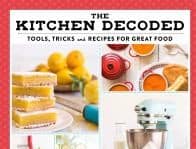
2
JanJoy of Cooking – Gadgets
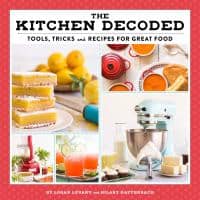 While I received several beloved small kitchen appliances for shower and wedding gifts nearly a half-century ago, most of them were resigned to the graveyard for kitchen gadgets over the years. I abandoned the electric can opener decades ago, along with the electric wok and labor-intensive turn-the-crank ice cream maker. If one of my small appliances was left abandoned in the cabinet above the refrigerator, or to the garage shelf behind the holiday décor, it was out of sight and out of mind. Those items never made the trip on the many moving vans as our family drove or flew to our new home. If it did get packed for the move, it may have stayed packed. Mice and spiders found cozy homes in tangled cords or Teflon coatings, and entire boxes were tossed into dumpsters in eventual clean-outs.
While I received several beloved small kitchen appliances for shower and wedding gifts nearly a half-century ago, most of them were resigned to the graveyard for kitchen gadgets over the years. I abandoned the electric can opener decades ago, along with the electric wok and labor-intensive turn-the-crank ice cream maker. If one of my small appliances was left abandoned in the cabinet above the refrigerator, or to the garage shelf behind the holiday décor, it was out of sight and out of mind. Those items never made the trip on the many moving vans as our family drove or flew to our new home. If it did get packed for the move, it may have stayed packed. Mice and spiders found cozy homes in tangled cords or Teflon coatings, and entire boxes were tossed into dumpsters in eventual clean-outs.
There are, of course, those favorite kitchen gadgets that I adore and use often. In the 1970s, I served my sister-in-law Minute Rice for dinner. She was the daughter of Japanese-Hawaiian parents, and she promptly gifted me with a Panasonic rice cooker that Christmas. (Rice, after all, is a sacred dish to be cooked properly!) I’ve cherished that cooker for nearly fifty years, and amazingly, it still works perfectly after hundreds of uses.
In the mid-80s, I joined millions of home cooks around the world who added Cuisinart food processors and KitchenAid stand mixers to their culinary repertoire. I took classes in the local mall’s cooking school, perfecting pie crust and pizza dough. I abused and overused both the food processor and mixer to their deaths, but happily replaced both of them recently. The Kitchen Decoded, by Logan Levant and Hilary Hattenback, published in 2014, is a perfect introduction to kitchen tools and accessories such as the food processor and stand mixer. The book is a “fun, new cookbook with chapters organized according to gadgets and appliances, and accompanying recipes that can be prepared with each tool.”
This past holiday, I found myself using many of my favorite countertop time-savers as they played musical chairs, coming and going from their cozy storage places in cabinets and closets to space on the countertops. We have a family holiday tradition of squeezing fresh orange juice on Christmas morning, so the electric juicer shared space with the automatic bread maker. The ice cream compressor was later replaced by the pasta machine which was then replaced by my trusty rice cooker an hour before dinner.
Immediately after our early holiday breakfast opening gifts, my young granddaughters ooohed and ahhhed as red-and-white-striped peppermint chunks slowly churned into creamy vanilla ice cream. It all turned decidedly pink and when the compressor was done- the luscious frozen cream was packed into the freezer to harden. I started with the basic recipe in Jeni Britton Bauer’s 2011 Jeni’s Splendid Ice Creams at Home. It’s my go-to book for delicious homemade treats.
Later that morning, we slowly poured a mixture of water, eggs and oil into semolina flour that rotated in the Phillips pasta machine. The girls excitedly awaited the moment they could begin to cut the emerging macaroni into uneven lengths that don’t seem to matter when they are mixed with cheese sauce to become Boxing Day’s macaroni and cheese. At the same time, my daughter arranged meaty lamb chops in the sous vide water bath so that they could slow-cook to perfect tenderness for a few hours in the afternoon. Before dinner, we would sear them on the gas stovetop until all six sides were crispy. The best thing about the sous vide process is that food can sit for hours at a warm temperature, awaiting just that right moment of preparation for the table.
A great book for anyone wanting to try out sous vide equipment and recipes is Hugh Acheson’s latest book published in 2019, Sous Vide: Better Home Cooking. Acheson has been a professional chef for years and at first he scoffed at younger chefs who used the sous vide technique in restaurants. Over time though, he realized that the sous vide method also had a huge impact on preparation and on taste and he has written this book for home chefs.
Later in the afternoon, I guarded the stand mixer as it creamed sugar and eggs and flour, and blended in and fruit for a spongy orange-cranberry cake. As my husband Gerry cleaned and dried each kitchen gadget, lifting it to its storage place, I swept flour and baking powder dust from the floor and washed butter, sugar and egg drippings from the counters. I wondered how 19th and 20th century grandmothers managed to get everything done in time for holiday dinners. Did they smile and grimace as little ones insisted on helping? I imagined that an army of cousins in huge households of extended families entertained the littlest ones, while the older ones took on tasks of cutting fruit and vegetables or creaming butter and sugar with a rotary beater. Gerry tells me of watching his Italian grandmother roll pasta into thin sheets with a clean broom handle, cutting it precisely while using that same handle as a straight edge.
Speaking of Gerry, he came home a few weeks ago with an Instant Pot. Giving in to chatter about this recent phenomenon (a recent and safer alternative to the pressure cookers of the past), he thought it would be fun to figure out how to use it. Facebook Instant Pot 101 posts rave about its miracles. “You’ll want at least two or three of them!” or “You’ll never use your oven again!” I took it out of the box and made several attempts to use it. I am not convinced that it will become one of my cherished kitchen gadgets. An entire chicken took nearly as long as it would have if it had been roasted in the oven (after allowing for browning, cooking, and pressure-release). This new Blueberry French Toast had no crisp or crunch that I expected of my oven-baked rendition.
Perhaps I just need more time and a few books from the library. The Instant Pot Bible (“the only book you need”), by Bruce Weinstein and Mark Scarbrough, might be useful, and my daughter swears by the Instant Pot Vegetarian Cookbook by Nadine Greeff. With time and plenty of books from the library, anything is possible in my kitchen, and in yours, as well. Happy new year of joyful cooking.
Charlotte Canelli is the Director at the Morrill Memorial Library in Norwood, MA. Look for her article in the January 9th, 2020 issue of the Transcript and Bulletin.
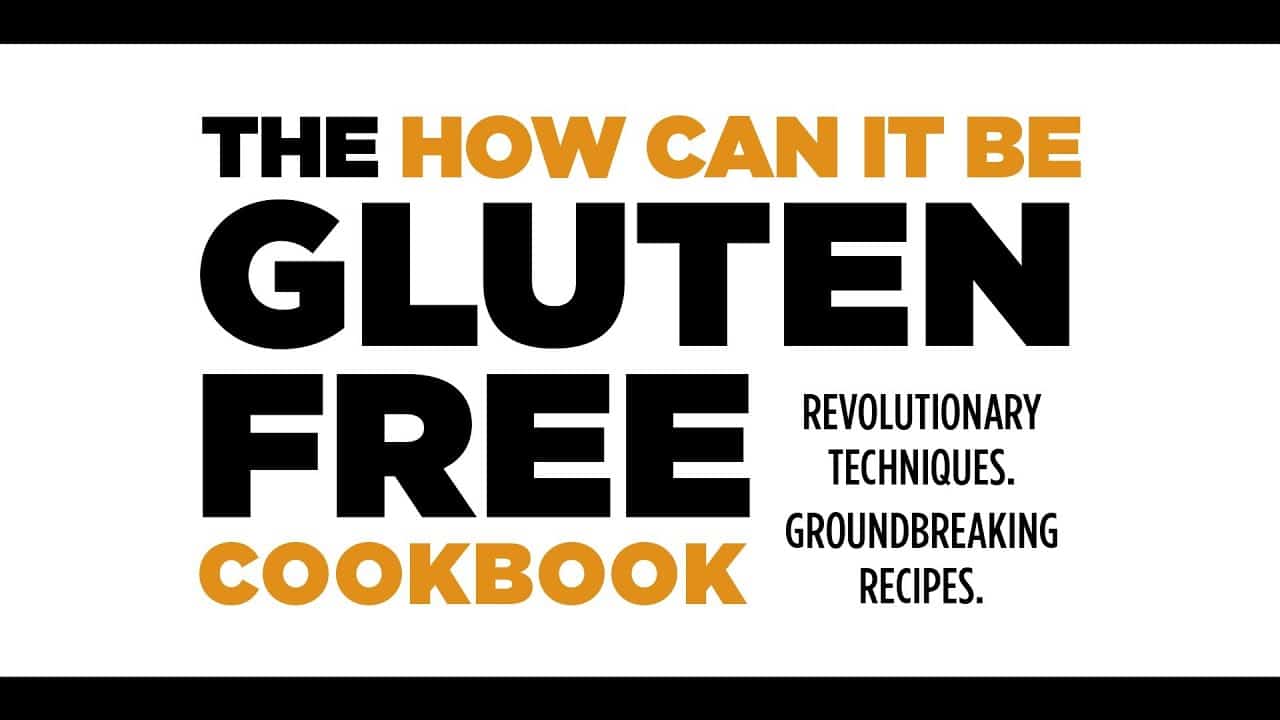
21
FebLessons Learned From Gluten-Free Baking
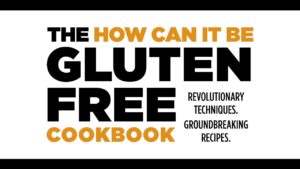
After struggling with GI issues for many years, I recently decided to take my diet in hand. I had previously gone “dairy-free” for the same reason and experienced some success, but I still wasn’t where I wanted to be, gastrointestinally speaking. Gluten, a storage protein in wheat that gives baked goods that elasticity and lightness, has long been touted as a contributor to aforesaid GI issues. My sister had already gone gluten-free for the same reason. There was only one thing standing in my way: my undying and uncompromising love for baked goods. I didn’t see how I could ever give them up and experience a satisfying diet. So, I went in search of gluten-free alternatives.
First, I bought several packaged brands of breads, bars, and some sweets. They were, for the most part, pretty horrible: dry, tasteless, heavy, just not a good “mouthfeel.” I found one or two bread brands that I liked, but I certainly wasn’t eating a sandwich every day. A little discouraged but still somewhat hopeful, I turned to homemade goods.
I have always loved to bake. It is relaxing and rewarding for me, and I enjoy trying new recipes. Since I have quite a bit of experience in the baking department, I figured this would be a cinch. There are many gluten-free (GF) flours available out there: rice, brown rice, soy, almond, and coconut, to name a few. I would simply substitute one of these flours for any white flour the recipe called for.
The first item I tried was GF pancakes. Easy! Same ingredients, just substitute the GF flour. The pancakes were rubbery with a gritty mouthfeel. Just in case I missed something, I tried again… with the same result. This was not a pancake that I could recommend, or for that matter, serve. After trying muffins, quick breads, cakes, cookies and brownies, I was discouraged. It was at this time that I discovered the Twist Bakery in Millis. This lovely little gem has not only gluten-free baked goods, but also dairy and nut- free. They have many selections, and everything I tried there was simply delicious. I live in Canton and can only get over there once in a while, so unfortunately Twist would not become my baked goods supplier. It did, however, inspire me to do some research. If GF baked goods can be this good, I can learn how to make them.
I went into the Minuteman catalog and typed in a search for “gluten-free baking.” One of the books that came up was The How Can It Be Gluten-Free Cookbook, by America’s Test Kitchen (ATK). Intriguing. After reading the introduction, I could see that good GF baking comes down to understanding the relationship between the amount of glutenin (a wheat protein) and its reaction to water and mixing. It’s not just a matter of using gluten-free flour. If the gluten is taken out, something else must be substituted, or one ends up with the aforementioned pancakes.
Three main factors come into play when one is using a gluten-free flour. First, the amount of glutenin in the flour is very important, as more glutenin = more strength and elasticity. With bread flour, for example, there is more glutenin, and using it results in a nice mouthfeel for bread. Cake flour, on the other hand, has a lower glutenin content and produces a soft structure that is perfect for cakes. Second, water is a big factor in the development of gluten. The more water, the stronger and more elastic the gluten is. This gives the baked good an “airier” result and is pleasing to the palate. Finally, mixing time is very important. The less a mixture is stirred, the less gluten will develop. In the case of muffins, this is why all package directions warn you not to “overmix.” Result? Tough, hard muffins that do anything but melt in the mouth.
Now we come to the substitutions for gluten. In the recipes from HCIBGF, America’s Test Kitchen, after literally thousands of tries, has developed a flour blend that can be used to produce pretty yummy baked goods. Their secret? A mix of GF flours, a mix of starches (for that elasticity), and nonfat milk powder (to help with browning). And for DF folks, we can use soy milk powder in place of the milk powder, with the same result. One other element is necessary with GF baking, and that is a binder. A binder acts as strengthener and gives the baked goods desired elasticity. ATK basically recommended xanthan gum, and, though it is not added to the ATK flour blend at the outset, each recipe calls for the flour blend AND a teaspoon or so of the xanthan gum.
The Living Gluten-Free Answer Book, by Suzanne Bowland
The How Can it be Gluten-Free Cookbook, Volume 2, by America’s Test Kitchen
https://www.americastestkitchen. com/guides/gluten-free/keys-to-successful-gluten-free-baking
Carla Howard is the Senior Circulation and Media & Marketing Assistant at the Morrill Memorial Library in Norwood, MA. Look for her article in the February 21, 2019 issue of the Norwood Transcript.
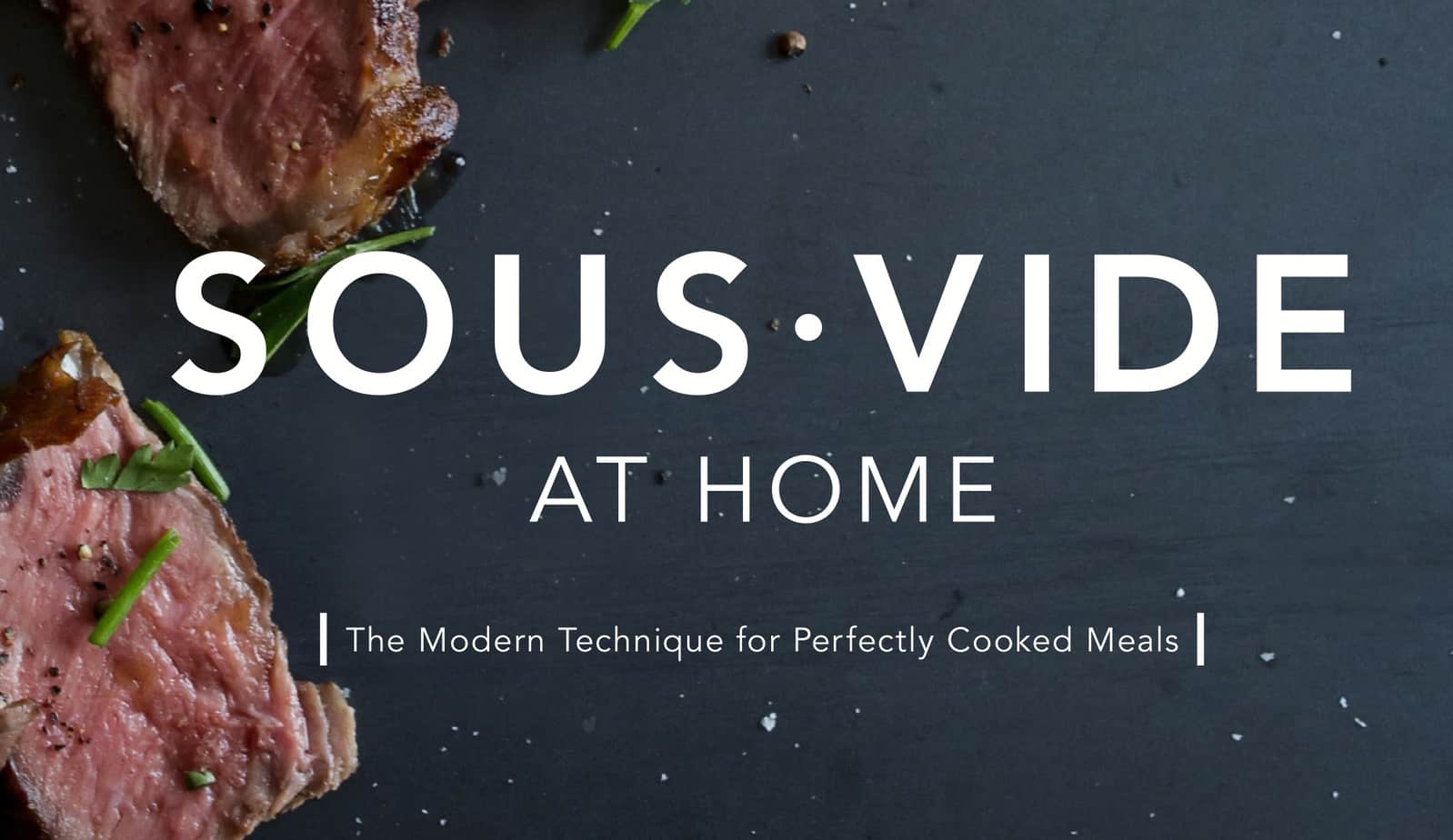
12
OctMake it Sous Vide!
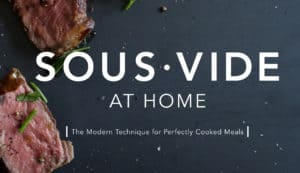 Believe it or not, I’m sometimes afraid of new technology. My ex-husband worked for one of Microsoft’s competitors in the late 1970s and 1980s and his company created one of the first word processing programs for the PC. Yet, in the early 1990s I still insisted on writing my graduate school papers on a word-processing typewriter. Because we had several computers in the house, my inability to embrace the PC drove him crazy – among a zillion other things, of course!
Believe it or not, I’m sometimes afraid of new technology. My ex-husband worked for one of Microsoft’s competitors in the late 1970s and 1980s and his company created one of the first word processing programs for the PC. Yet, in the early 1990s I still insisted on writing my graduate school papers on a word-processing typewriter. Because we had several computers in the house, my inability to embrace the PC drove him crazy – among a zillion other things, of course!
It’s not that I am distrustful of technology – I’ve actually been an early-adopter of many gadgets and devices – but I must fully understand them first. I hate reading boring instruction manuals and that often trips me up. I’m a hands-on learner and my confidence level often has wild rides of highs and lows when learning how to use a new appliance or gadget.
That said, once I am a firm-believer, I drive everyone a bit looney when I insist on singing, and re-singing, the praises of each of my new gadgets and appliances. Gerry and I bore our friends with wondrous tales of inventions like the steam cleaner, vacuum sealer, spiralizer, espresso maker and milk frother.
This is especially true in the kitchen where I spend much of my time on the weekends. In my early marriage years, I heartily adopted the Cuisinart food processor, the KitchenAid stand mixer, and the automatic bread and pasta machines. Sometimes these machines hum in the kitchen for weeks, and other times they lie silent for months or years. Still some are part of my everyday repertoire.
My eldest daughter is an amazing, adventurous cook. Mostly due to her driven spirit, but also because she is severely allergic to nuts and seeds, she makes everything from scratch, including roasting her own coffee beans. Due to her infectious enthusiasm (the acorn doesn’t fall far from the tree), I love to watch her use her newest equipment, sometimes adopting it into my own life.
That’s where the sous vide comes in.
Several years ago, she pronounced her love of her new sous vide on her Facebook page. I was, apparently, living in the dark ages because I had no idea what a sous vide was. I don’t usually watch any cooking shows (binge-watching the Great British Baking Show was an exception), so I researched this exotic tool myself. I asked her to bring her sous vide equipment to our home several years ago and we had the most amazing lamb rib chops that I’ve ever tasted at dinner that night.
Soon after I received my own sous vide stick from Gerry for my 65th birthday. (One of the things I love about my husband is his constant and hearty support of my whimsies and interests.)
Yet, that is where my fears sometimes bring my enthusiasm to a halt. It seemed to me that there were so many complications to cooking with the sous vide. I read several books and agonized over additional tools and equipment. It’s important to eliminate heat loss, and vacuum-sealed packets must not touch each other. I ordered numerous exotic accessories, and then promptly packed all of it in my appliance closet until my courage overcame my anxiety.
It was there that the sous vide sat – until this past weekend when my determination took hold and I decided to experiment in the way I learn best – hands-on and under pressure. I planned a dinner for neighbors and committed to an uncomplicated menu of center-cut beef shanks and butter-poached baby potatoes.
Sous-vide is a French term for “under vacuum.” Simply put, you cook food that is vacuum-sealed in a plastic pouch in a water bath for a long time at a perfect low temperature. With the sous vide technique, the food cooks evenly throughout. It doesn’t overcook or undercook, as long as you know what you are doing. The moisture in the food is retained.
Little did I know, but high-end restaurants use the sous vide method for meats and shellfish all the time. That is how they serve you a perfectly-cooked chop or scallop that is quickly seared and placed on your plate.
You can use fancy tools, or not so fancy. My Anova sous vide stick is a version that actually has a Bluetooth setting, which seems a bit extravagant and foolish. This sous vide immersion circulator is firmly attached to a plastic bin filled with water, the tool is turned on and brought up to a specific temperature, the vacuum-sealed food is placed into the bin, and the food is cooked for a specific time.
This weekend’s beef shanks were vacuum-sealed with a sprig of fresh thyme, slices of onion and garlic, and a sprinkle of freshly ground salt and pepper. They were then cooked in a constant 155 degree water bath for 20 hours. Yes, 20 hours. Some sous vide techniques call for 48 hours of cooking! The beef will be removed from the water bath several hours before dinner and quickly seared in a very hot grilling pan before serving. In the interim, the vacuum-sealed baby potatoes will poach with butter and parsley at 194 degrees for two hours.
If you’d like to learn about sous vide cooking, complete with amazing recipes, there are plenty in our Minuteman Library catalog and at our library here in Norwood. If you start with some of the best cookbooks, sous vide techniques and equipment are fully explained in the first chapters. The Essential Sous Vide Cookbook by Sarah James is a great book to start with because she has lots of practical guidance and advice, including techniques on preparing food for sous vide recipes. Sous Vide at Home by Lisa Fetterman even has techniques for cooking Thanksgiving dinner! Fetterman has another book, Sous Vide Made Simple (in 60 everyday recipes.) There are several eBooks instantly available on Hoopla: The Sous Vide Kitchen by Christina Wylie and Make it Sous Vide! by Meredith Lawrence.
Of course, this week’s column was due before dinner was fully cooked, but I have complete confidence in my sous vide technique. My daughter texted me a big high-five because she is delighted that I’ve finally overcome my anxiety. My husband is finally looking forward to another delicious dinner – this time, sous vide style.
Charlotte Canelli is the Director of the Morrill Memorial Library in Norwood, Massachusetts. Read Charlotte’s column in the October 11, 2018 edition of the Norwood Transcript and Bulletin.
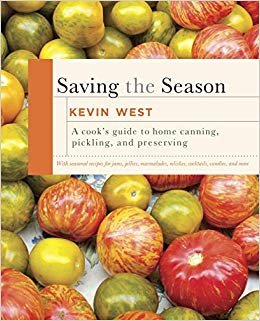
20
SepFall Flavors Sans Pumpkin Spice
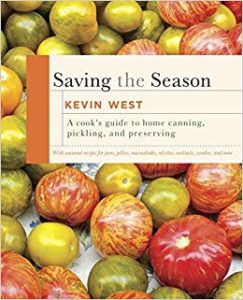 Last fall, I was unpacking the groceries from a trip to the market. My husband popped into the kitchen to “help” put the food away, a.k.a. survey my selections so he can plan what I refer to as his “snack-tivities” for the week.
Last fall, I was unpacking the groceries from a trip to the market. My husband popped into the kitchen to “help” put the food away, a.k.a. survey my selections so he can plan what I refer to as his “snack-tivities” for the week.
After a few minutes of cupboards opening, I heard him exclaim, “Ugh! Why would anyone buy this?!” I turned around, expecting him to be holding one of the weird veggies I buy without knowing what I’ll do with them, but nope, he’s holding a box of pumpkin spice Cheerios. I thought they looked good, but my husband thought I was trying to poison him. This was the moment that I learned that my husband hates almost all pumpkin spice flavored things.
He always ate my squash pie at Thanksgiving dinner, which has the same flavoring as pumpkin spice, so why this sudden hatred for this popular fall flavor? Apparently, the problem is over-exposure. Dunkin’s introduced a pumpkin muffin a few years ago, which I thought was a good fit. New Englanders have been eating spiced pumpkin bread for centuries, so why not make it muffin shaped? But the pumpkin spicing didn’t stop there. Now there are pumpkin spice Oreos, pumpkin spice tea, and pumpkin spice Peeps. Even I draw the line at pumpkin-y marshmallow chicks.
Still, I love warm flavors. Fall and winter are my favorite food seasons and my taste trends toward old fashioned. My favorite meals are the ones served from one giant roasting pan and heat up the whole house in their making. Give me apples, squash that will last months in a root cellar, cozy breads, and warm Indian pudding. Don’t get me wrong, I also enjoy a good avocado and egg sandwich- I am a millennial after all (barely), but if I knew it was my last meal, I would be ordering my grandmother’s Canadian boiled dinner followed by a gigantic slice of squash pie.
My husband is the opposite. He also likes warm flavors, if by warm, you mean HOT. He loves thermonuclear chicken wings, spicy and tangy fish tacos, and self-concocted barbecue sauces that make my eyes water. If I am an autumn/winter eater, he is all about summer flavors. I think that might be why he hates seeing pumpkin spice flavored everything lining the grocery store shelves- it is a signal that summer is over.
For my husband’s sake, I am trying to avoid pumpkin spice overload this autumn and am seeking out fresh fall flavors that won’t induce winter woes, but will still use the ingredients available from our local farms and orchards. Luckily, the library has more than a few books to help me.
The first book I found does less to celebrate the upcoming cooler weather and more to stretch the tastes of summer further. Saving the Season: a Cook’s Guide to Home Canning, Pickling, and Preserving, by Kevin West is a super book for gardeners and farm-share households. I am always scrambling in October to preserve the glut of late season tomatoes and other garden goodies practically falling off the tangle of vines that is my vegetable patch. This book gives options- tasty, tasty options.
The book that I am just loving right now is Dishing Up the Dirt: Simple Recipes for Cooking Through the Seasons, by Andrea Bemis. The author is a passionate farmer and has crafted recipes that take advantage of what her organic farms has on offer each season. She experiments with flavors in recipes like her beet, walnut and kale pizza or winter squash carbonara, but still includes new twists on classic recipes, like tomato sauce to use up the last of the season’s tomatoes, and sweet potato pie.
Another book that made my mouth water is America Farm to Table, by Mario Batali. Batali also takes on using local, seasonal ingredients to make yummy dishes that will please a crowd. He looks to towns and cities across the country for inspiration. I found that the recipes inspired by Vail, Colorado fit well with what my garden is producing and what is available at nearby farmers markets. The beef and chard meatballs were lick-the-plate-clean good.
Even with summer quickly fading away, I am hoping to ease the transition into fall for my anti-pumpkin spice husband with a few recipes from these great titles. Maybe I can even save a few recipes to take the sting out of that first snowfall.
Alli Palmgren is the Technology Librarian at the Morrill Memorial Library in Norwood, Massachusetts. Read Alli’s column in the September 20, 2018 issue of the Norwood Transcript and Bulletin.
